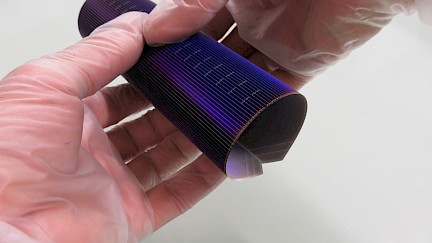The two main advanced silicon technologies that are currently replacing the standard PERC cell for terrestrial uses are the Silicon HeteroJunction (SHJ) and TOPCon cells. Both feature passivated contacts and usually rely on n-type silicon substrates.
In space, silicon solar cells suffer from electron and proton radiation induced damages. Use of p-type substrates, front emitters and thin wafers can help to limit this effect. Beyond improving the radiation hardness, thin wafers facilitate design of lightweight and flexible photovoltaic arrays.


